How does an artist see the world?
Putting synaesthesia to one side for a moment, what does the world look like through the eyes of other artists? I often wonder about this.
When I look at a market stall heaving with brightly coloured fruit and vegetables, or the undulating view of the countryside from a hill top, or a tiny flower poking up through a crack in the pavement, how is what I’m seeing different from what you are seeing?
If you put ten artists in front of a scene and asked them to paint it, no two would paint the same thing. One might reduce it to a series of sparse abstract marks, another might express it with vibrant non local colours and added extras, and yet another might paint it as realistically as they could.
I’ve been thinking about this recently. In one sense I don’t like to categorise and single out, to make it be about ‘artists’ vs ‘non artists’; on the other hand I notice that painters {and also writers, photographers and all sorts of other artists} tend to see the world a little differently from people who don’t regularly express themselves in that way.
Is it that we’re just wired that way? Or are we, by repeatedly expressing ourselves in our most creative ways, in a state of constantly training ourselves to see more deeply into things, to not always take at face value what our eyes seem to be telling us?
For me it’s always a case of looking with the most consciousness I can bring to the moment; in basic terms the difference between a penetrating gaze and eyes that have glazed over from familiarity or lack of interest.
Here are a few ways that I like to look at the world that help me grow my gifts and skills in painting, as well as just as an observer of the world. Some are ingrained habits, some I have to consciously remember to do. What I love is that it’s like flipping switches; you can go from micro to macro in a moment, or switch the focus of your eyes to create a very different scene in front of you.
And of course you don’t have to be a painter to use them; by themselves they make life more interesting!
look again
Here in England we get a lot of what I call ‘white sky’; what not only looks but also feels like a heavy blanket of opaque whiteness that covers the blue. The other day I was mentally complaining about how much I loathe the white sky, when I found that if I looked more carefully it wasn’t a blank white at all; it was layer upon layer of soft greys and other pastel colours.
It was so subtle I had to concentrate to see the variations, but once I did I couldn’t un-see them, and the hated white sky lost much of its oppressiveness and became something rather beautiful. I’m not going to lie, I’ll still take blue over that any day of the week! But looking again made all the difference.
Seeing details at a subtle level recreates what you’re looking at. All that’s required is the willingness to look again.
look beyond
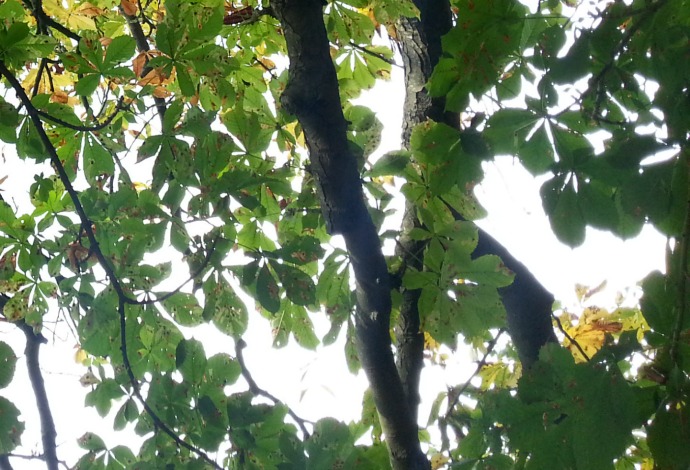
patterns created by negative space through branches and leaves – I particularly love those ‘three fingered’ shapes of light created by the leaves
This is a fun one, and can be particularly helpful in painting. Imagine you’re standing at the edge of a wood. The trees closest to you are of course large and wide, thinning out as they recede into the distance. Some are leaning or have fallen over. Overhead the branches criss cross each other, creating an uneven patchwork against the sky.
Switch your focus from the trees and branches to the spaces between them. You can do this on a smaller scale with a vase of flowers. You can look at what IS there – the solid forms of trunks and leafy branches, or you can look at what ISN’T – the negative space between.
Sometimes I like to make a drawing entirely using the negative space of a scene; it can be a way to ‘abstractify‘, or simply an exercise in building the known from the unknown. It stretches the brain and the eyes beyond our usual way of seeing.
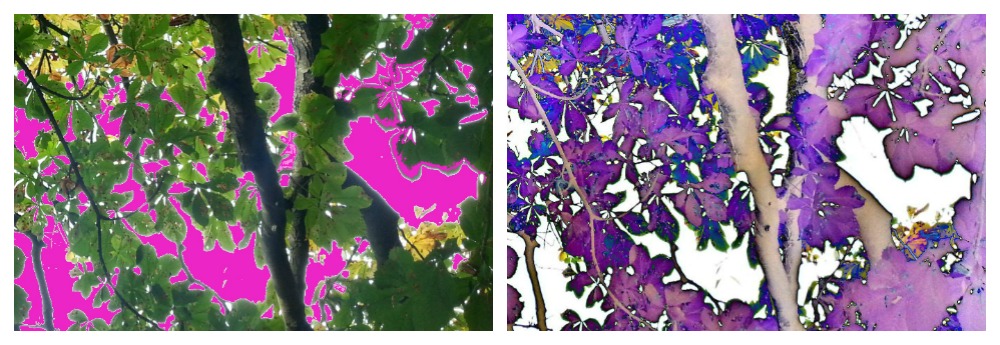
LEFT: Using the bucket tool to highlight the negative spaces in pink. RIGHT: Using the solarize adjustment in Pixlr to help see the spaces
look through
Another focus-switching approach, looking through shows us the layers of life. Looking through a window while seeing what’s reflected in it creates a multi layered image. My recent explorations into double exposures has made this even more interesting and something that can be actively used as an approach to painting.
Looking through can also be a variation on looking beyond; what happens when we look through a fine mesh or fabric, or a filter of coloured plastic? What about looking at something through someone else’s eyes? An interesting exercise might be to paint something based on someone else’s description of it!
look up
This is really about seeing things from a new angle. Beyond the obvious approach of simply looking up at what’s higher than you, you can make variations on this. You can get down low to take photos; a favourite of mine is to photograph plants from beneath them, which tends to involve lying on the ground. Up from under can be a very interesting way to see the world. Just ask a small child. Or a dog. 🙂
What ways of seeing do you use as an artist or otherwise actively creative person? Please share them in the comments – my list is by no means exhaustive and it’s fascinating to learn and be inspired by how others see the world!

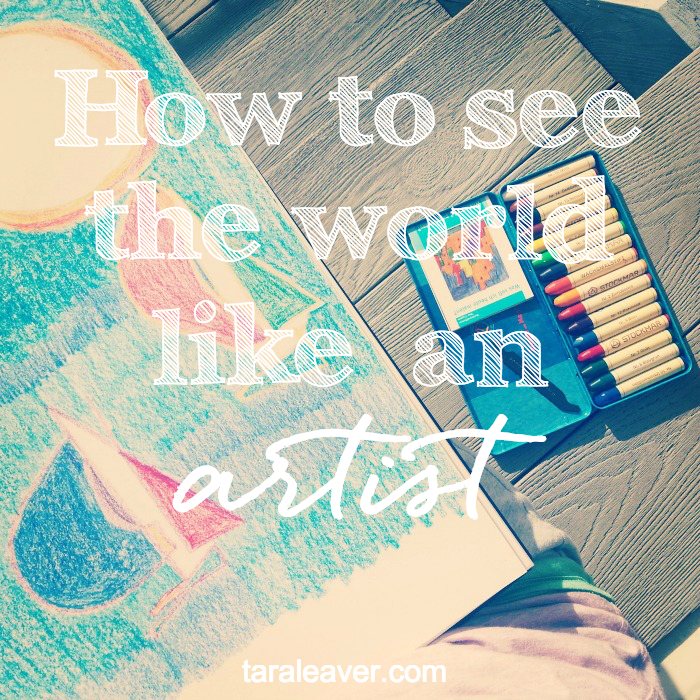
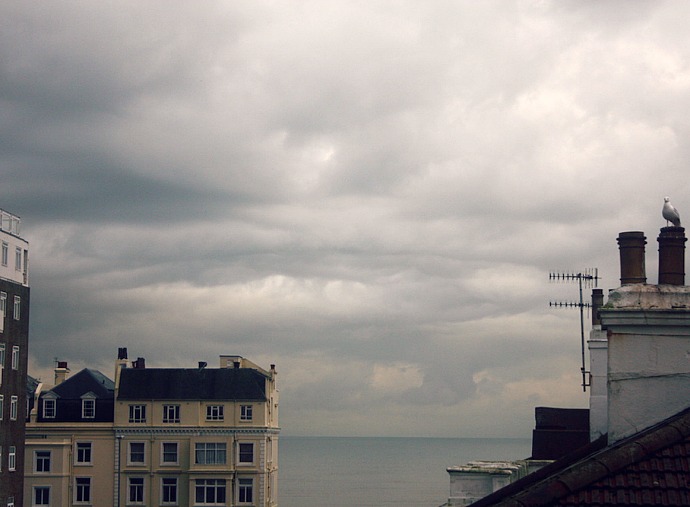
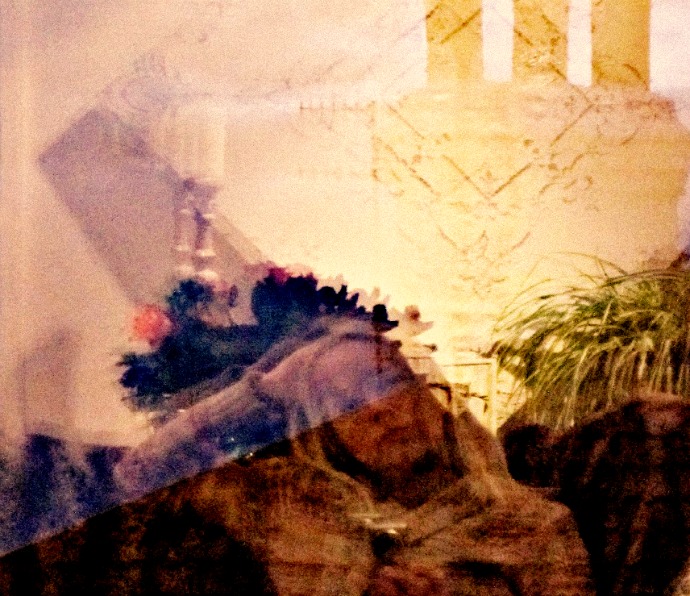
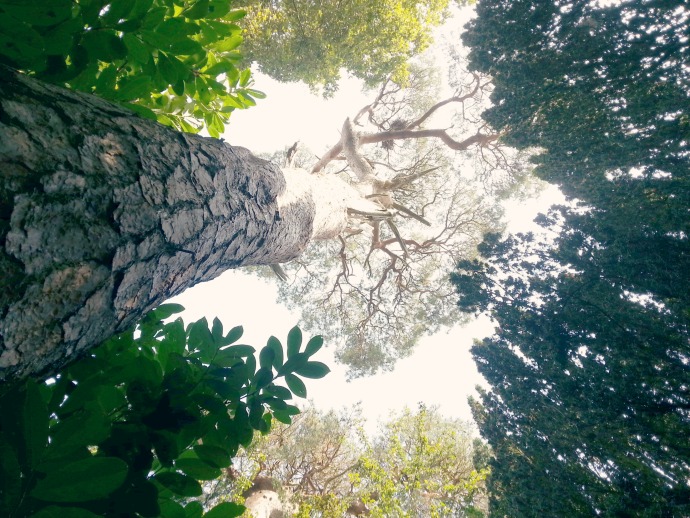






Always inspiring! Beautiful photos! Thank you!
Thank you Barbara! So glad you enjoyed it. 🙂
Beautifully written – images and ideas. Thank you Tara.
Thank you Mairim!
Tara,
Great idea’s and beautiful photo’s. Sending you some blue sky your way…….!!!
Lovely, thank you Lisa! {It worked by the way! Lots of blue sky today.}
Another great article Tara. I am just getting back into the visual arts. This brought back some things I had forgotten plus some ideas to take note of like reflections in windows and looking up from below the grass. Thank you!
Thank you Buck! Glad to help remind you of some things!
I like to unfocus my eyes as I look at a scene or object, then look to the distant while concentrating on what is closer to me. In a way it is like using your peripheral vision as you look straight ahead, but are aware of something to your side view. I get better at it with practice & use it in a meditative manner. Sometimes objects will gather a kind of glow as I mentally “watch” them.
I think I know what you mean Cheryl – I’ve seen that ‘glow’ too. Love this, thanks for sharing it as another way of seeing!
Looking up
How we so easily get caught in secure ways of seeing things
More looking up, sideways, from the top, or with closed eyes
Yes! Habits are so easily formed while we’re not looking {pun intended 🙂 }. I like the idea of looking with closed eyes.